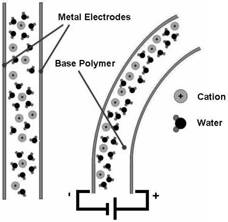TA・RA
Molecular Beam Epitaxy of Mn-doped IV, III-V, & II-IV-V2 Semiconductors Related Materials & Devices for Possible Spintronics Applications
名前と所属

Josué F. Guzmán L. (ホスエ・グズマン) I am a second year Doctor Course student in the Energy and Evironmental Systems program at Nagaoka Univeristy of Technology (NUT). His main research currently concerns the development and characterization of electroactive polymeric materials for mechanical actuator and sensor applications. Josue Guzman received his B.Sc. in Chemical Engineering in 2004, and M.Sc. in Materials (Constitutive Model and Evaluation of Metal hybrid Electroactive Polymers) in 2007 both from the ITESM (Institute of Technology and Superior Studies of Monterrey) in Monterrey, Mexico. Josue Guzman is currently a student at Dr. Takaomi Kobayashi’s Laboratory in NUT (from 2008), he has given over 5 presentations in International conference in Mexico, the United States and Japan since 2006, and has currently 1 article published in the Journal of Applied Polymer Science (2009). Contact Information:E-mail: naisor@gmail.com
Cell-Phone: 080-3383-4540
研究内容
Electroactive Biopolymer Composite Membranes
Electroactive polymers are functional materials that exhibit special characteristics when they are stimulated by either electricity or deformation. When an electrical stimulus is applied, the material will deform spontaneously while, if deformed, it will produce an electrical signal; similar to piezoelectric materials. Ionic Polymer-Metal Composites (IPMC) are hybrid materials which result from depositing conductive metals over the surface of ion-exchange polymers using chemical reactions. The reasons behind the electroactive phenomenon present in IPMC are because of the movement of ions and water molecules within the ion-exchange polymer (Nafion), and the polarization of the conductive metal layers (Platinum) in the hybrid material. Even though IPMC have been studied thoroughly over the last decade or so, they still remain very cost ineffective and difficult to process in larger scales other than thin films due to the constraints of the currently used components. This research follows the principle at which IPMC electroactive polymers work by focusing in the combination of more cost effective and renewable materials as its components. It currently works by preparing electroactive polymers using biopolymer gel (κ-Carrageenan) and conductive polymers (Polyaniline) to become the ion-exchange and conductive layers respectively. This is done by synthesizing the conductive polymer inside the cross-linked polymer matrix of the biopolymer gel. The result is a composite hybrid material that exhibits electrical conductivity in its surface and ion-exchange properties in the inside polymer analogically similar to an IPMC.
 |
